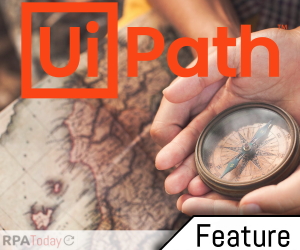
UiPath has been a pioneer and a standard bearer in the RPA space. And, nearly a month ago it debuted on the New York Stock Exchange in the most highly anticipated initial public offering the still-nascent industry has seen.
The company, born in Romania and transplanted to New York City, set an offering price of $56 per share in its debut. It surged in the first week to more than $80 per share before settling over the past few weeks to $70—a 25 percent increase from the IPO.
At last Friday’s close, UiPath’s market capitalization stood at nearly $37 billion, $9 billion more than its expected valuation at the $56 per share IPO target and $2 billion higher than the company was valued after its $750 million raise in February.
UiPath’s rise mirrored that of the RPA industry in general: For a while it built awareness and adoption without attracting much attention. But, when it broke out, it did so in a big way. Daniel Dines and Marius Tirca founded the company in 2005, but didn’t raise a $30 million Series A until 2017. In the four years after that, UiPath raised nearly $2 billion on its way to April’s IPO.
The company looks at its IPO as a milestone in its effort to raise awareness of the RPA category.
“We jumped in at an opportunistic time in the market,” Bobby Patrick, chief marketing officer at UiPath tells RPA Today. “We actually raised our Series E during the IPO process. I think we demonstrated that we can be aggressive, that we have a vision for big opportunities, and the IPO is another step in that journey.”
But, after the biggest weeks in its history, what is the next “big opportunity” UiPath sees to advance RPA and the role its platform plays in the enterprise of the future?
Scale and Governance
In the way that matters most, according to Executive Vice President of Products & Engineering Ted Kummert, the IPO changed very little at UiPath.
“Our job yesterday was to listen to customers and ship great products. Our job tomorrow is to listen to customers and ship great products,” Kummert says, “That rhythm keeps going.”
But, the products evolve, and UiPath’s newest release will point them toward the future by enabling customers to more easily scale their bot implementations and by providing more robust governance—characteristics that have eluded many users in the space.
On April 26, only a week after the IPO, UiPath released version 2021.4 of its platform. The company intends to help users scale their programs by taking fuller advantage of StudioX—the platform’s citizen developer experience—empowering more individuals within an organization to conceive and develop automations. Kummert envisions tens of thousands of robots, even more than 100,000, in its customers’ organizations developed by business lines to solve their challenges.
To elevate governance in the platform, the company is emphasizing the availability of UiPath Automation Ops, a centralized, web-based platform that enables the configuration and deployment of governance policies for UiPath Studio and UiPath Assistant. Automation Ops is an admin feature available in UiPath Automation Cloud.
“Customers can be assured that their desired policy is actually in place as they utilize their platform,” Kummert explains. “And this is especially important as you’re looking at the growth of citizen developers using StudioX to build automations. IT departments want the automations being built interacting with the systems they should be and that everything is happening in compliance with the organization’s security policies.”
Journey of Discovery
Another important part of UiPath’s vision for its customers moving forward from the IPO is the notion of discovery.
Version 2021.4 will enable users to discover more opportunities in their organizations for automation. Adding to existing task capture and process mining capabilities, the most recent version of the platform introduced task mining to that family of discovery products.
“Task mining is about watching the activities of end-users and identifying repetitive tasks, which can very directly lead to opportunities to automate,” Kummert says. “We’ve had some great customer stories already—being able to use task mining to not only find repetitive tasks they didn’t know about, but also to understand how tasks they knew about happen, so they can implement the automation for that kind of activity correctly.”
New Paths
But UiPath is certainly thinking farther ahead than enhancements for a new version of its software this year. Kummert and Patrick see the platform evolving into one that can be used to create new processes rather than just automate existing manual ones.
And, the Covid-19 pandemic, an unprecedented global challenge, actually highlighted some of the potential to accomplish this goal.
“There were things happening during Covid that never happened before. And, use of our technology really accelerated because it was one of the only tools in the tool bag that could actually solve a lot of problems—or opportunities—that arose: PPP loans for banks, or new scheduling challenges for healthcare or hospital organizations, etc.,” Patrick recalls. “Time to value became really critical in those situations, which is a real strength for RPA.”
As UiPath moves into its new post-IPO phase, Patrick sees the platform consuming adjacent markets of technology and delivering them in new ways.
“We have our roots in computer vision and UI automation, but we think we will be able to take that time-to-value benefit into other tech areas,” he says. That’s been a deliberate strategy for us, and one that will really continue paying off for customers.”
If you liked this article, please sign up to RPA Today! Registrants will receive our free weekly RPA newsletter updating you on the most recent developments in the Robotic Process Automation, Intelligent Automation and AI space. In addition to news updates, we will also provide feature articles (like this one) with a more in-depth examination of RPA issues for end users and their enterprises.


